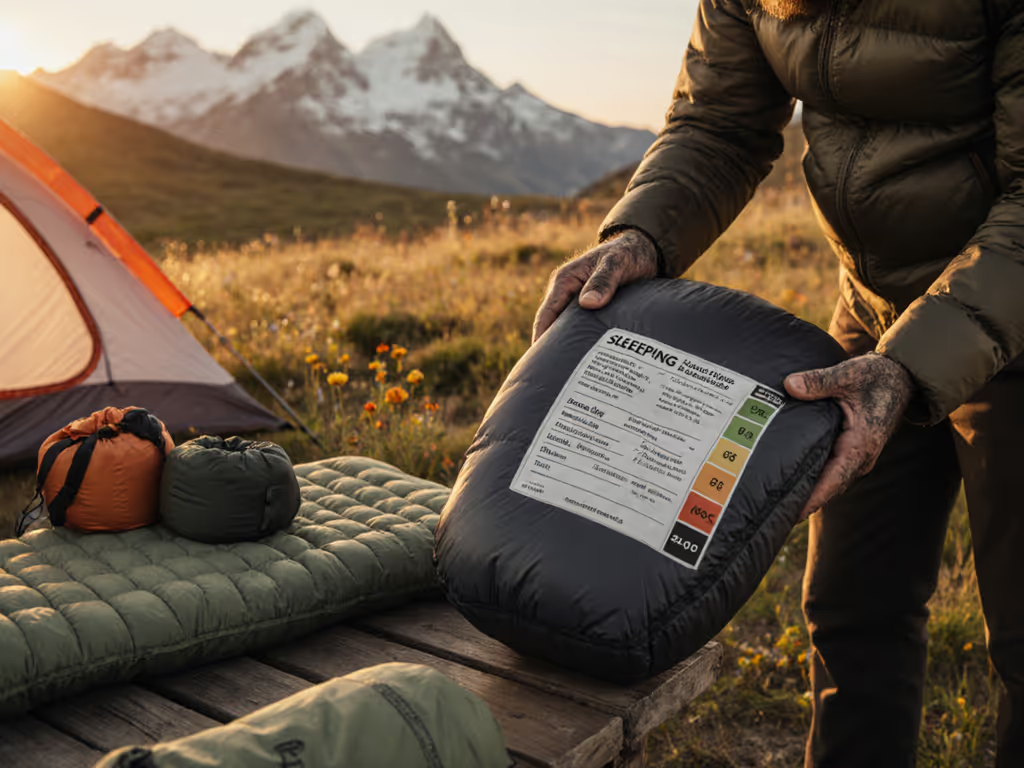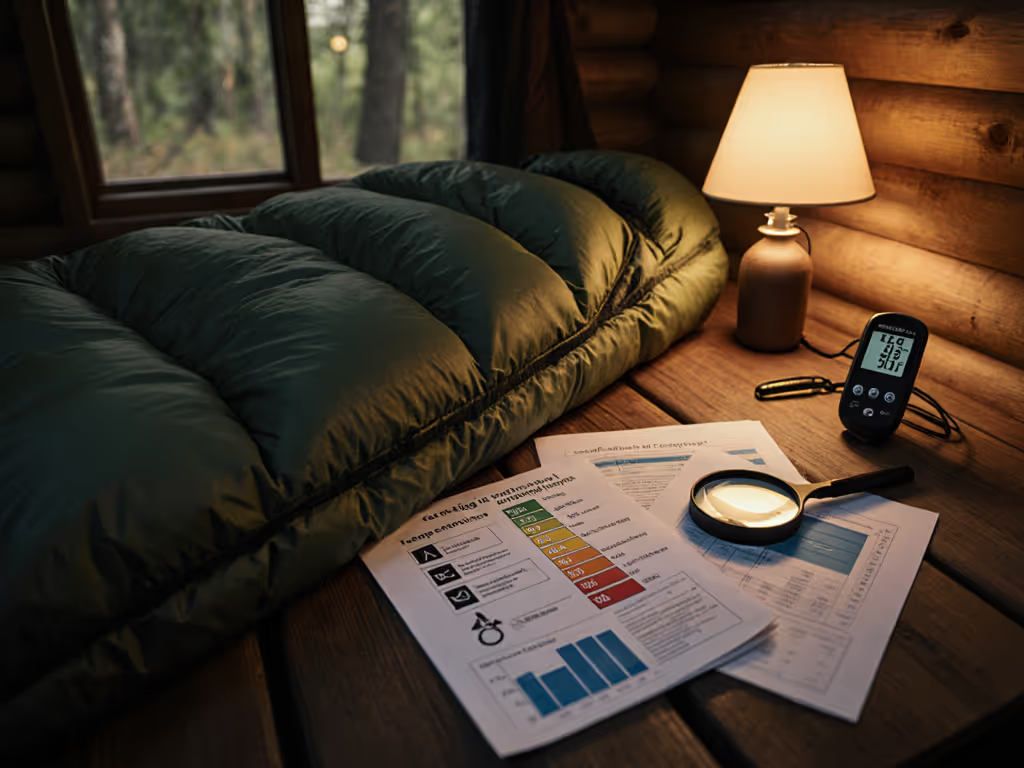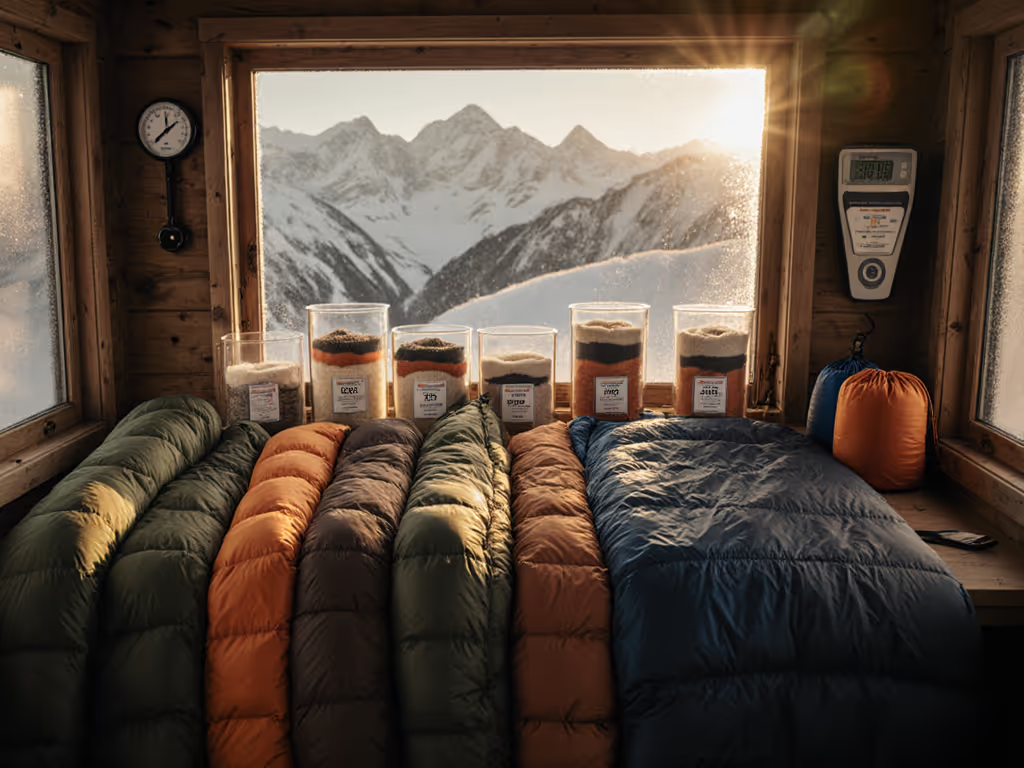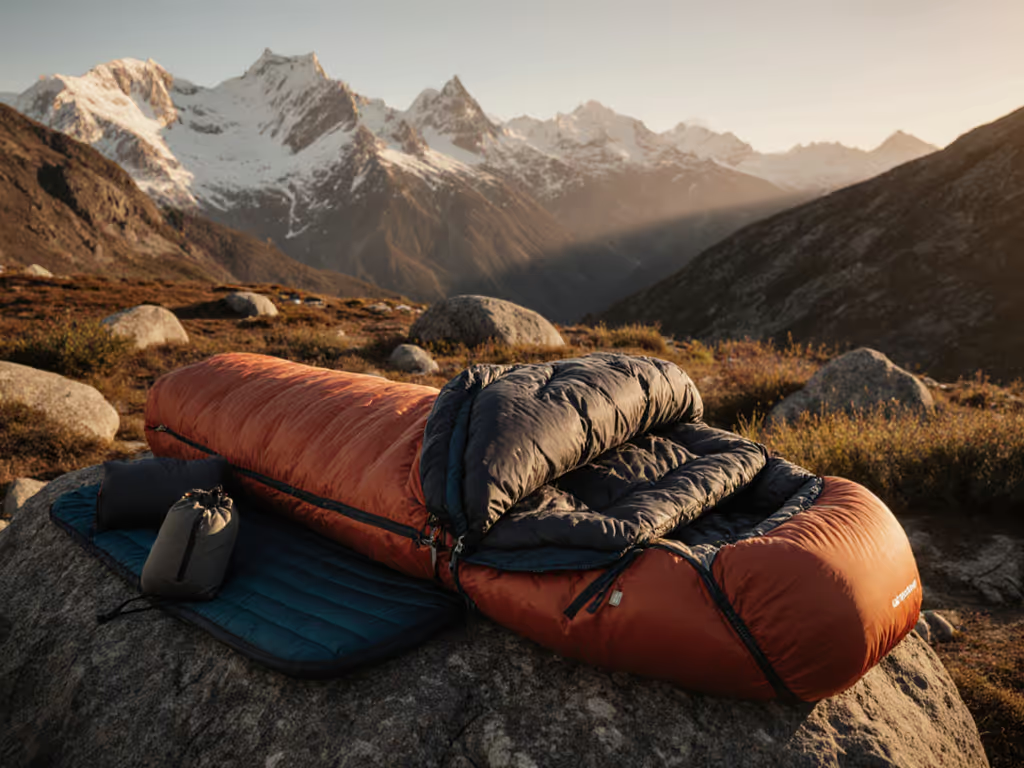
Sleeping Bag Baffles: Types & Warmth Efficiency Guide
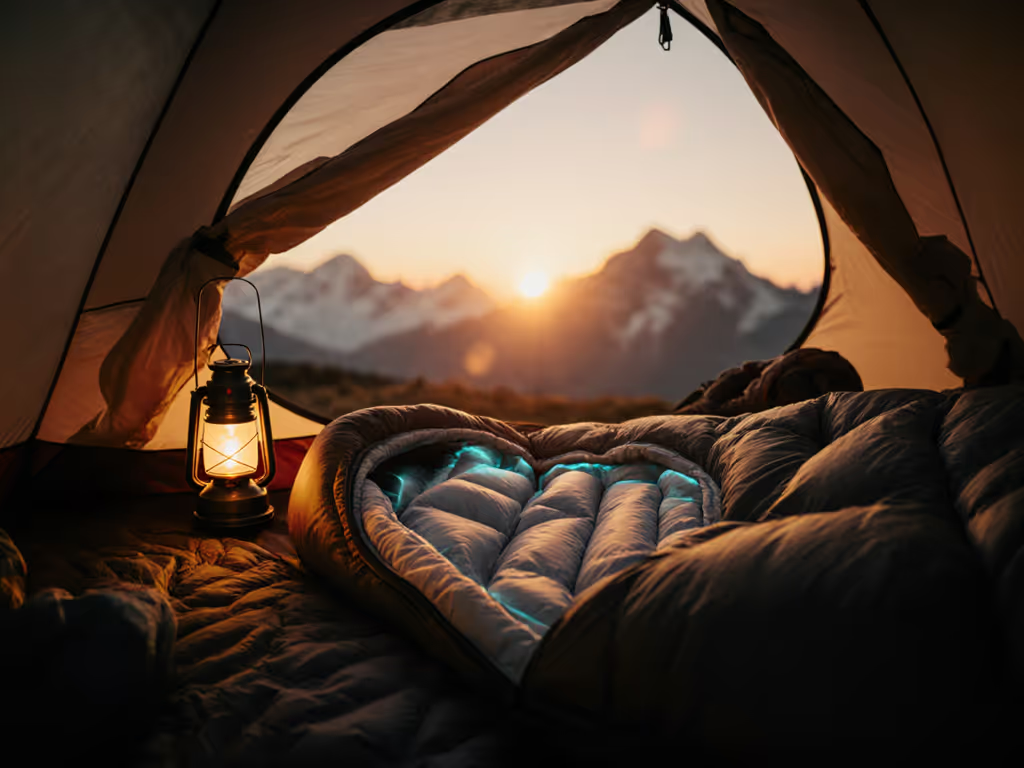
Understanding sleeping bag baffle types and how sleeping bag baffles work is essential for anyone who's ever woken shivering when their '20°F' bag should have been sufficient. That night above treeline taught me that warmth isn't just about temperature ratings, it's about how insulation moves, settles, and maintains loft in real-world conditions. Your sleeping bag's baffle construction determines whether that down stays where you need it most when wind whips through your shelter or when you shift positions in the night. Let's break down the engineering behind these critical design elements that make or break your sleep system's performance. For the fundamentals, see our sleeping bag insulation guide to understand how heat retention and dryness interact with baffle design.
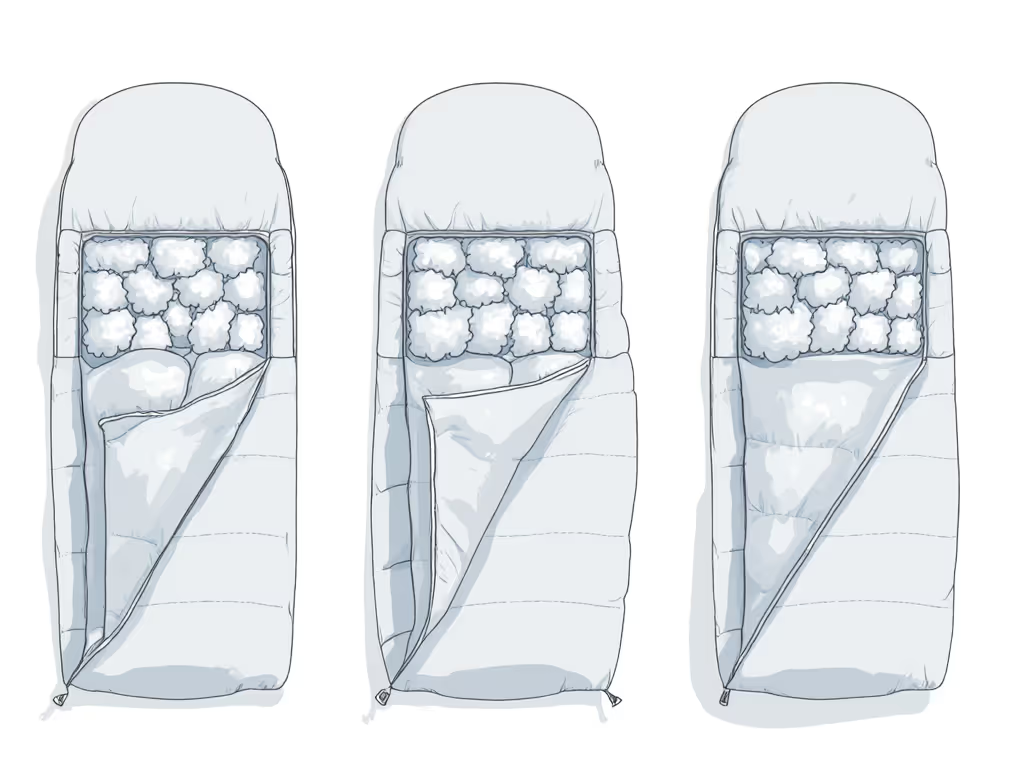
Why Baffle Design Matters Beyond Temperature Ratings
Baffles are the internal fabric walls that create chambers for insulation. Their construction isn't just about preventing down migration, it's about strategic heat management. When I coach new alpine leaders, I emphasize that the warmth efficiency of baffle construction directly impacts your margin of safety in variable conditions. Consider these wind and calorie adjustments: a poorly designed baffle system might force you to burn valuable calories shivering rather than conserving energy for tomorrow's summit push.
Most sleeping bags use one of two fundamental approaches to baffle construction, each with distinct thermal properties:
- Sewn-through: Fabric layers stitched directly together, creating thin insulation chambers
- Box-wall/box-baffle: Internal mesh creates three-dimensional chambers that allow full loft
The key difference? Box-wall vs sewn-through baffles represent a fundamental trade-off between weight and warmth efficiency. Sewn-through bags weigh less but sacrifice warmth because stitch lines create thermal bridges. Box-wall construction eliminates these cold spots but requires more fabric and down to maintain loft throughout the chamber.
Common Baffle Arrangements and Their Thermal Performance
Beyond the basic construction method, the arrangement of baffles significantly impacts performance, especially in cold-weather scenarios for sleeping bags where every bit of warmth preservation counts. Let's examine the most common configurations:
Horizontal Box Baffles
These run across the width of the bag, perpendicular to your body. Traditional and versatile, they allow you to redistribute down during warm spells by laying the bag flat and shifting insulation toward your feet. However, when you're sleeping on your side, gravity can pull down from your chest to your back, creating cold spots. Horizontal baffles work well for 3-season sheltered camps but show limitations in windy alpine conditions.
Vertical Baffles
Running head-to-toe along your body, vertical baffles prevent gravity-induced down shift when you change positions. This arrangement shines for side sleepers in shoulder-season conditions because insulation stays distributed across your torso regardless of position. If you routinely sleep on your side, our side sleeper sleeping bag picks explain which shapes and dimensions keep warmth without feeling restrictive. The trade-off? You lose the ability to manually redistribute down when temperatures fluctuate. For committed alpine bivies where wind exposure is constant, this stability often outweighs the flexibility of horizontal baffles.
Trapezoidal and V-Tube Baffles
These advanced designs combine the benefits of both horizontal and vertical arrangements. Trapezoidal baffles (with offset side walls) eliminate cold spots between seams while improving down dispersion. V-tube baffles form triangular chambers that reduce down migration with minimal additional weight. These designs represent the cutting edge of sleeping bag engineering explained, maximizing warmth-to-weight ratios for technical conditions.
Baffle Metrics That Actually Impact Warmth
Understanding these specifications will help you evaluate claims beyond marketing hype:
- Baffle height: Vertical dimension of the insulation chamber (higher = more potential loft)
- Baffle width: Horizontal dimension (narrower = less down migration but potentially inconsistent distribution)
- Baffle offset: Horizontal offset of the internal mesh creating trapezoidal chambers
The most thermally efficient designs use strategic combinations, for example, wider baffles in the footbox where less insulation is needed and narrower baffles across the torso where consistent warmth matters most. To compare down quality and loft, read our fill power guide for what 650 vs 800 actually means in warmth-to-weight. Remember: your pad's R-value works in tandem with your baffle design. A high-loft bag with poor baffle construction won't compensate for inadequate ground insulation in windy, sub-freezing conditions.
Critical Considerations for Alpine and Shoulder-Season Sleep
In my years optimizing sleep systems for variable mountain conditions, I've learned that baffle performance changes dramatically with environmental factors. Here's what matters most when temperatures drop and wind picks up:
- Wind exposure: Horizontal baffles compress more easily under wind pressure, allowing insulation to shift
- Moisture management: Wet conditions compress down unevenly, and baffle design affects recovery
- Sleep position: Side sleepers benefit from vertical or trapezoidal baffles that maintain even coverage
- Temperature fluctuations: Continuous baffles allow manual redistribution but require active management
Consider this checklist before your next trip into marginal conditions:
- Will wind exposure compress my insulation unevenly based on baffle orientation?
- Does my baffle design maintain consistent coverage across my torso in my preferred sleep position?
- Have I accounted for pad R-value in my temperature margin of safety?
- Can I redistribute down if needed, or does my system require stability above flexibility? For technique-based boosts, see our guide to staying warm in your sleeping bag—layering, hot water bottles, and positioning can close small baffle-related gaps.
Warmth is a system, not a single-spec promise.
Here's the system I'd actually take
For most alpine shoulder-season trips where I expect variable winds and 25-40°F temperatures, I prioritize:
- Baffle arrangement: Vertical or trapezoidal construction for stable insulation coverage
- Baffle height: Minimum 3" across torso to maintain full down loft under wind pressure
- Wind contingency: Additional 5°F margin of safety built into rating for exposed camps
- Pad integration: R-value 4.5+ sleeping pad to support the bag's thermal performance
This approach addresses the core issue I learned from my windy bivy failure: ISO ratings assume still air conditions. When wind cuts through your shelter, baffle design determines whether your insulation maintains its rated performance or collapses into cold spots.
Final Verdict: Matching Baffle Types to Your Sleep System Needs
Your perfect baffle system depends entirely on your specific conditions and sleep habits. For car campers and sheltered three-season backpackers, horizontal box baffles offer flexibility and value. But for anyone facing windy alpine environments or shoulder-season uncertainty, vertical or trapezoidal baffles provide the consistent coverage that translates temperature ratings into real-world warmth.
Remember: your sleeping bag doesn't operate in isolation. Baffle performance interacts with your pad's R-value, shelter wind resistance, and even your sleep position. Evaluate baffle design as part of your complete sleep system, not as a standalone feature. When you understand how sleeping bag baffles work within your specific conditions, you'll stop chasing temperature ratings and start building reliable warmth where it matters most.
The next time you're comparing bags, look beyond the fill weight and temperature rating. Examine the baffle architecture, those internal chambers determine whether your down performs as promised when you need it most. After all, in the mountains, warmth isn't given; it's earned through intelligent system design.
Related Articles

